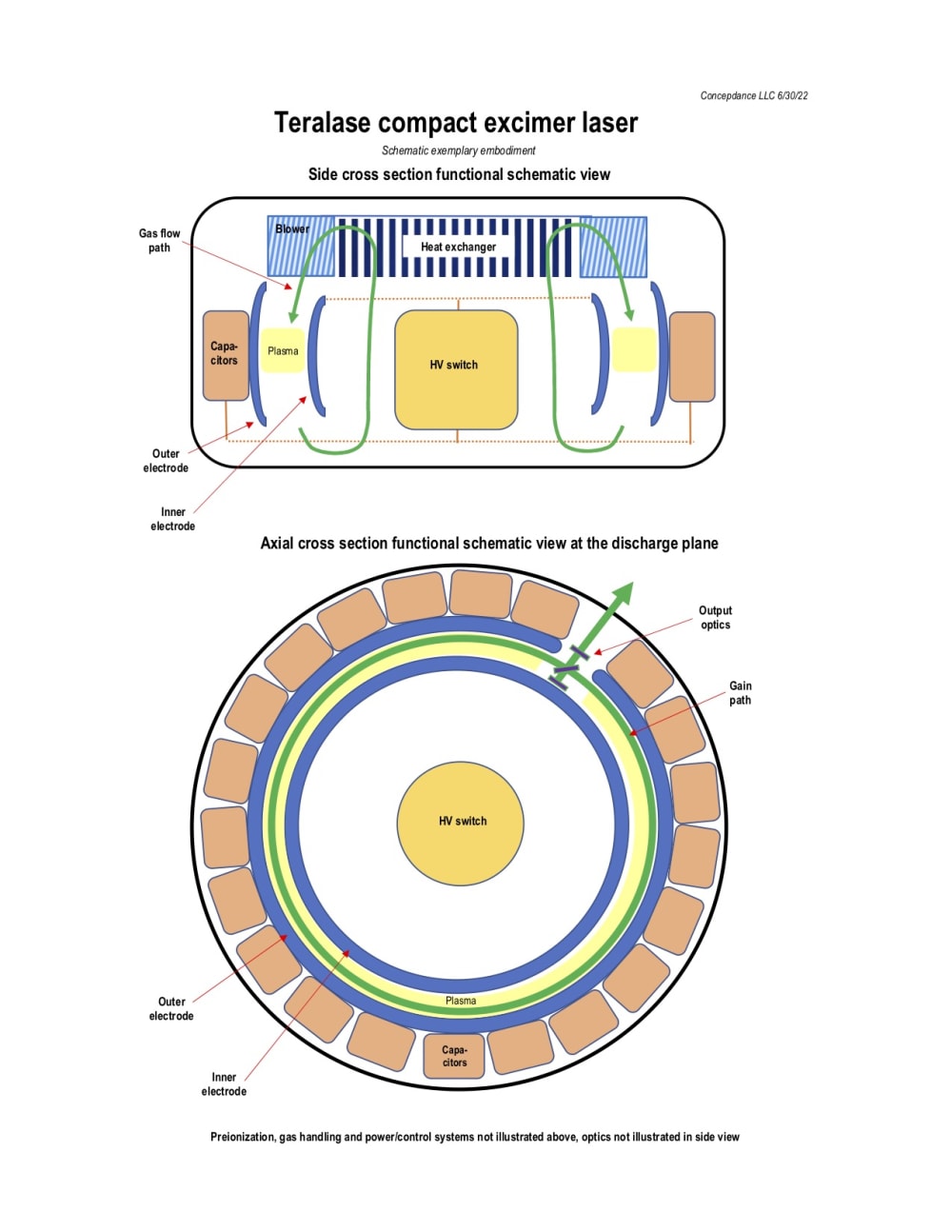
The current invention proposes novel, improved designs for high pulse energy transverse discharge gas lasers such as excimer lasers. The new designs provide an annular gain path, capitalizing on grazing incidence reflections from laser electrode surfaces and enabling the engineering of very low inductance electric discharge circuits, efficient gas circulation, and a very compact physical footprint relative to existing excimer laser systems, with applications including photolithography, micromachining, surface annealing, remote sensing, and photorefractive vision correction surgery.
The invention originated in an observation that in addition to their primary output beam, conventional excimer lasers can emit parasitic beams caused at least in part by grazing incidence reflections from slight longitudinal concavities (defects) in their elongated electrode surfaces. In at least one manufacturer's excimer lasers these parasitic beams included as much as 40% of the nominal output pulse energy, unless suppressed by one or both of intracavity apertures and enhanced mechanical designs to ensure that the electrode surfaces were everywhere convex. Understanding that substantial laser gain can be readily diverted into these parasitic beams led to the present concept, to configure an excimer laser with inner and outer annular electrodes, the outer electrode having a transverse profile that is intentionally concave, thereby taking advantage of rather than suppressing grazing incidence reflections from the electrode surface, and providing a correspondingly annular gain volume between the electrodes. Optical ring-type resonators are known in small to micro-scale laser art, but such systems are generally based on establishing resonant optical modes around the ring, while our proposed system is constructed on a much larger physical scale, does not attempt to establish specific optical modes, and integrates the functions of an elongated high voltage gas discharge electrode and a grazing incidence reflector into a single component.
As illustrated in the Figures, which for clarity are not drawn to scale, the proposed excimer laser, named "Teralase" for Total External Reflection laser, advantageously leverages the annular electrode design to provide an exceptionally low-inductance axisymmetric electric discharge path, as well as efficient annular gas flow using an axial fan or blower. The system could be very compact: a laser having an effective gain length of one meter might be packaged in a substantially cylindrical vessel having a diameter and a length each on the order of 50 cm. Engineering for a prototype Teralase system would primarily focus on two functional areas: design of the inward-facing surface of the outer convex electrode to optimize sweeping the annular gain volume into laser output, and design of the output coupling system for the laser. In the exemplary embodiment illustrated in the enclosed lower Figure, the outer electrode is interrupted along its circumference to provide a short, discharge-free section for receiving output optics. Various other output coupling approaches are contemplated, including for example slightly helical or spiral electrode configurations.
Teralase's reduced inductance, likely reduced EMI emissions, axisymmetric gas flow, potentially improved optical sweeping of the gain volume, and compact configuration, provide significant development opportunities for enhancing excimer laser performance and reliability.
-
Awards
-
 2022 Top 100 Entries
2022 Top 100 Entries
Like this entry?
-
About the Entrant
- Name:Steven Bittenson
- Type of entry:individual
- Software used for this entry:None
- Patent status:none

